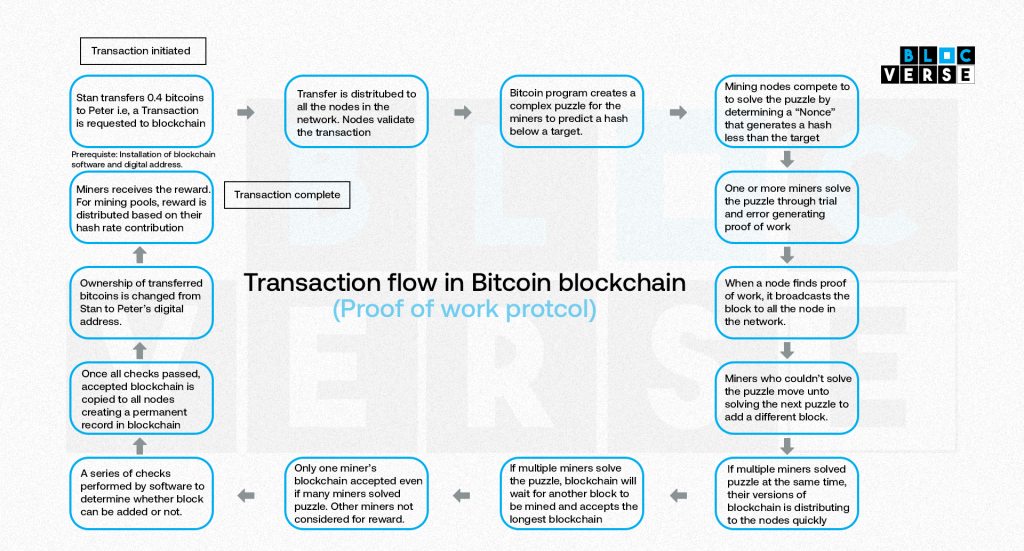Table Of Content:
INTRODUCTION
Blockchain technology has been widely adopted in recent years and is widely seen as one of the most important technological advancements of the modern era.
At the heart of blockchain technology lies the concept of nodes, essentially computers that form the backbone of the blockchain network.
In this article, we will discuss the role of nodes in the blockchain ecosystem and what they mean for the future of decentralised systems.
WHAT IS A BLOCKCHAIN NODE: DEFINITION AND CONCEPT
A blockchain node is a computer connected to the blockchain network that stores a copy of the blockchain’s ledger and participates in the consensus process.
They are responsible for verifying transactions and adding them to the blockchain ledger, creating a tamper-proof record of all activities on the network.
Blockchain nodes interact with one another. The greater the number of nodes, the more decentralised the network.
In the context of blockchain technology, nodes play a critical role in maintaining the integrity and security of the network.
As with most blockchains, anyone can set up a node, but it is important to note that there are exceptions to a few networks like Ripple that restricts participation to specific nodes.
UNDERSTANDING BLOCKCHAIN NODES: HOW DO THEY WORK?

A blockchain node plays a critical role in the network by broadcasting and validating transactions. When a user initiates a transaction, it is received by a node that then shares it with the rest of the network.
Every node in the network checks the transaction to confirm that the sender has sufficient funds and is authorised to send them.
The verification of transactions by every node enhances the security of the network. For an invalid transaction to be approved, it must be confirmed by most nodes, at least 51%.
In blockchain networks with hundreds or thousands of nodes, it is improbable that a malicious actor could gain control of 51% of the nodes.
To determine its security level, it is essential to research how a specific blockchain’s nodes work before investing in a cryptocurrency.
After the validation of new transactions by the nodes, they are grouped into blocks.
The addition of each new block to the blockchain follows the consensus rules of the network, which are enforced by specific nodes referred to as full nodes.
UNDERSTANDING BLOCKCHAIN NODES AND MINERS
Cryptocurrency mining is a prevalent method used by several blockchains, including Bitcoin, to validate transactions.
This system involves specialised nodes called miners who confirm groups of transactions and receive crypto rewards in return. The transaction process is divided between nodes and miners.
Initially, nodes validate transactions, and miners compete against each other to confirm those transactions.
The consensus mechanism of the blockchain determines the way miners compete.
The most common method is proof of work, where miners race to solve a mathematical equation.
Once the winning miner assembles and confirms transactions into a block, it broadcasts the block to the network for nodes to review. Each node checks the block’s validity and adds the validated block to its blockchain.
However, not all blockchains use mining or have miners. In addition, there are other consensus mechanisms like proof of stake, where participants are required to lock up their cryptocurrency funds as collateral to validate transactions.
TYPES OF BLOCKCHAIN NODES
There are different types of nodes in the blockchain ecosystem, each serving a unique purpose.
Nodes needed for a blockchain vary depending on the network’s specific requirements. Therefore, all blockchain networks do not necessarily have every type of node.
The following are the types of blockchain nodes:
- Light nodes
- Archival full nodes
- Pruned full nodes
- Masternodes
- Mining nodes
- Lightning nodes
- Authority nodes
- Staking nodes
LIGHT NODES
A light node solely downloads and preserves block headers, and since it operates on fundamental data, it requires full nodes to function. It is primarily used for rapid and straightforward transactions.
ARCHIVAL FULL NODES
Archival full nodes maintain a complete ledger of the blockchain, which includes all transactions from the initial to the latest. Due to the vast storage requirement of blockchains, this type of node necessitates significant memory availability.
PRUNED FULL NODES
A pruned full node has a set memory limit and retains the latest blockchain transactions by deleting older blocks. This process is known as pruning, and the node preserves metadata and sequence of the removed blocks.
MASTERNODES
A master node is a full node that verifies transactions and upholds the blockchain’s record, but its inability to append blocks to the chain sets it apart.
MINING NODES
Mining nodes partake in cryptocurrency mining, selected based on the blockchain’s consensus mechanism. For example, the initial mining node to solve a mathematical problem validates a block of transactions in proof of work. Mining nodes can comprise one miner or a mining pool, a group of miners cooperating.
LIGHTNING NODES
A lightning node forms an independent network where users connect off the blockchain to perform off-chain transactions. These transactions are executed and subsequently added to the primary blockchain.
Lightning nodes are beneficial on congested blockchain networks that suffer from slow processing and high transaction fees, facilitating low-cost, near-instantaneous transactions.
AUTHORITY NODES
An authority node is elected by the managing organisation or community in blockchains with a vetting process, such as proof-of-authority systems, which use approved nodes with identification information.
STAKING NODES
A staking node stakes cryptocurrency funds as collateral to confirm blocks of transactions in blockchains that use a proof-of-stake system.
It can be a single user or a staking pool, where a group of users combine their crypto funds to increase their likelihood of being selected.
IMPORTANCE OF BLOCKCHAIN NODES
The following are the importance of blockchain nodes:
- Nodes are an essential component of this decentralised architecture, as they provide the computing power necessary to verify transactions and maintain the integrity of the network.
- This decentralisation also makes the network more resistant to cyberattacks, as no central point of failure can be targeted.
- Another critical aspect of nodes is their role in the consensus process. For a blockchain network to function effectively, all nodes must agree on the network’s state and the transactions’ validity.
Different consensus algorithms are used in the blockchain ecosystem, each with its strengths and weaknesses.
Some of the most popular algorithms include proof of work (PoW), proof of stake (PoS), and Delegated proof of stake (DPoS).
Nodes are also crucial for the scalability of blockchain networks.
As more and more nodes are added to the network, the computational power of the network increases, which allows for faster transaction processing and a more significant number of transactions to be processed per second.
This is important for the long-term success of blockchain technology, as it allows for more widespread adoption and use of the technology in various industries.
HOW TO CREATE BLOCKCHAIN NODES
Setting up a blockchain node is a straightforward process that can be achieved in three simple steps:
- Acquire suitable hardware for your node, which may require dedicated devices to avoid performance issues from running the node on your computer.
- Download the blockchain node software and install it on your machine.
- Run the software daily, noting that the blockchain may have specific minimum requirements.
Hardware and internet connection are the most significant considerations in setting up a blockchain node.
Sufficient memory is vital, particularly for full archival nodes that store the entire blockchain.
Additionally, since blockchain nodes upload a significant amount of data, checking the upload limits on your internet plan is crucial to avoid potential problems.
Setting up a node is an excellent option for users who want to support a cryptocurrency project because nodes are crucial in ensuring blockchain security.
CONCLUSION
Nodes play a critical role in the blockchain ecosystem and are essential for maintaining the network’s security, integrity, and scalability.
As blockchain technology continues to evolve and gain widespread adoption, the importance of nodes is only set to increase.
As the number of nodes increases, so will the potential of blockchain technology to revolutionise the way we store and transfer data and assets in the digital world.


